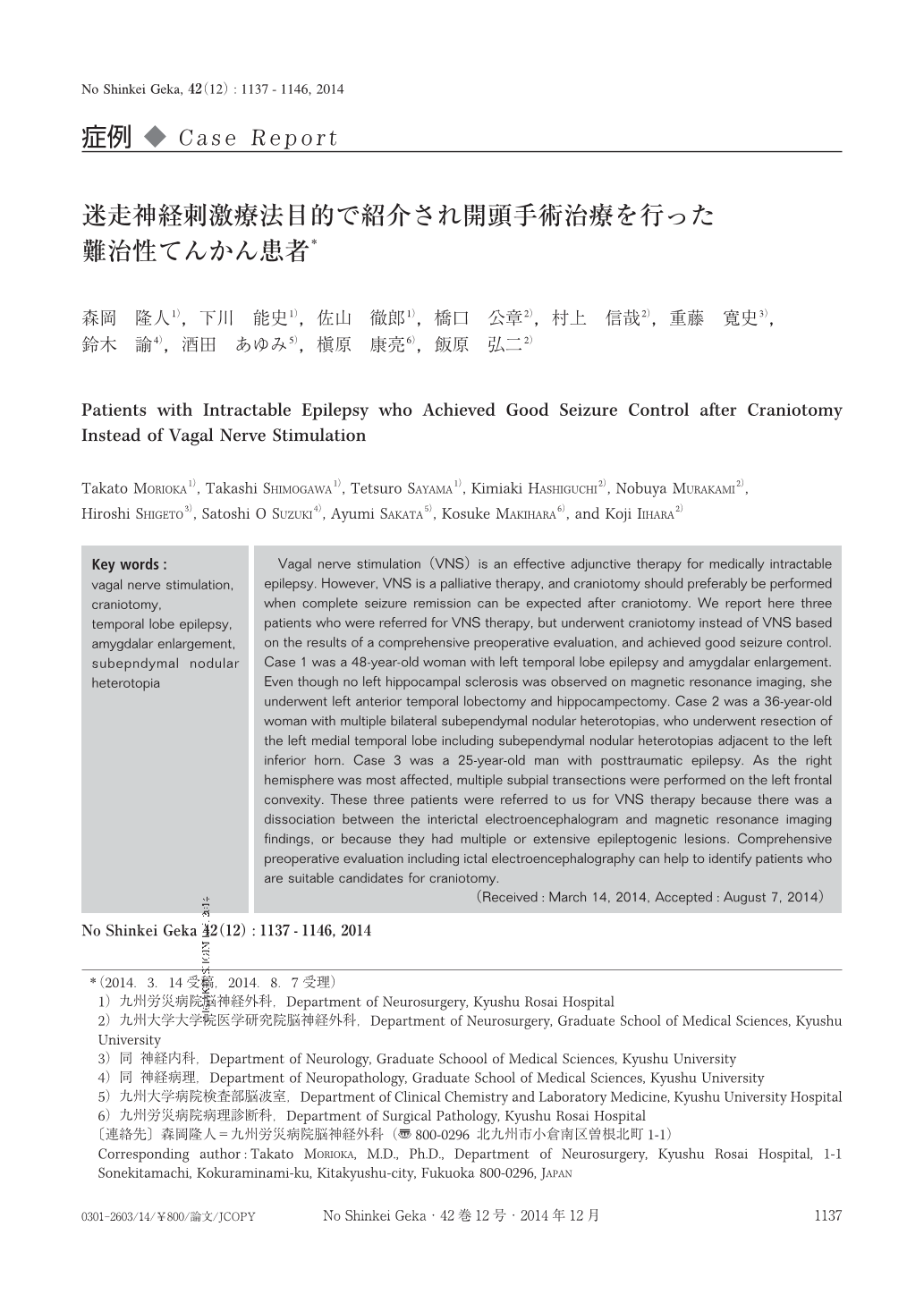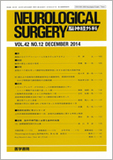Japanese
English
- 有料閲覧
- Abstract 文献概要
- 1ページ目 Look Inside
- 参考文献 Reference
Ⅰ.はじめに
迷走神経刺激療法(vagal nerve stimulation:VNS)は,てんかんに対する非薬剤性治療の1つであり,抗てんかん薬に抵抗する難治性てんかん発作を減少,軽減する緩和的治療である.植込型の電気刺激装置により,左頚部迷走神経を間欠的に刺激する9).欧米では1990年代から行われているが,わが国では2010年7月から保険適応となった9,18,20).しかし,VNSはあくまで補助的・緩和的治療であり,発作の完全消失は得られにくい.そのため,開頭手術による根治が期待できるのであれば開頭手術を優先する9,18).今回VNS目的で紹介されてきたが,術前検査の結果,開頭手術を行い,良好な発作転帰が得られた3例を経験したので報告する.
Vagal nerve stimulation(VNS)is an effective adjunctive therapy for medically intractable epilepsy. However, VNS is a palliative therapy, and craniotomy should preferably be performed when complete seizure remission can be expected after craniotomy. We report here three patients who were referred for VNS therapy, but underwent craniotomy instead of VNS based on the results of a comprehensive preoperative evaluation, and achieved good seizure control. Case 1 was a 48-year-old woman with left temporal lobe epilepsy and amygdalar enlargement. Even though no left hippocampal sclerosis was observed on magnetic resonance imaging, she underwent left anterior temporal lobectomy and hippocampectomy. Case 2 was a 36-year-old woman with multiple bilateral subependymal nodular heterotopias, who underwent resection of the left medial temporal lobe including subependymal nodular heterotopias adjacent to the left inferior horn. Case 3 was a 25-year-old man with posttraumatic epilepsy. As the right hemisphere was most affected, multiple subpial transections were performed on the left frontal convexity. These three patients were referred to us for VNS therapy because there was a dissociation between the interictal electroencephalogram and magnetic resonance imaging findings, or because they had multiple or extensive epileptogenic lesions. Comprehensive preoperative evaluation including ictal electroencephalography can help to identify patients who are suitable candidates for craniotomy.

Copyright © 2014, Igaku-Shoin Ltd. All rights reserved.


